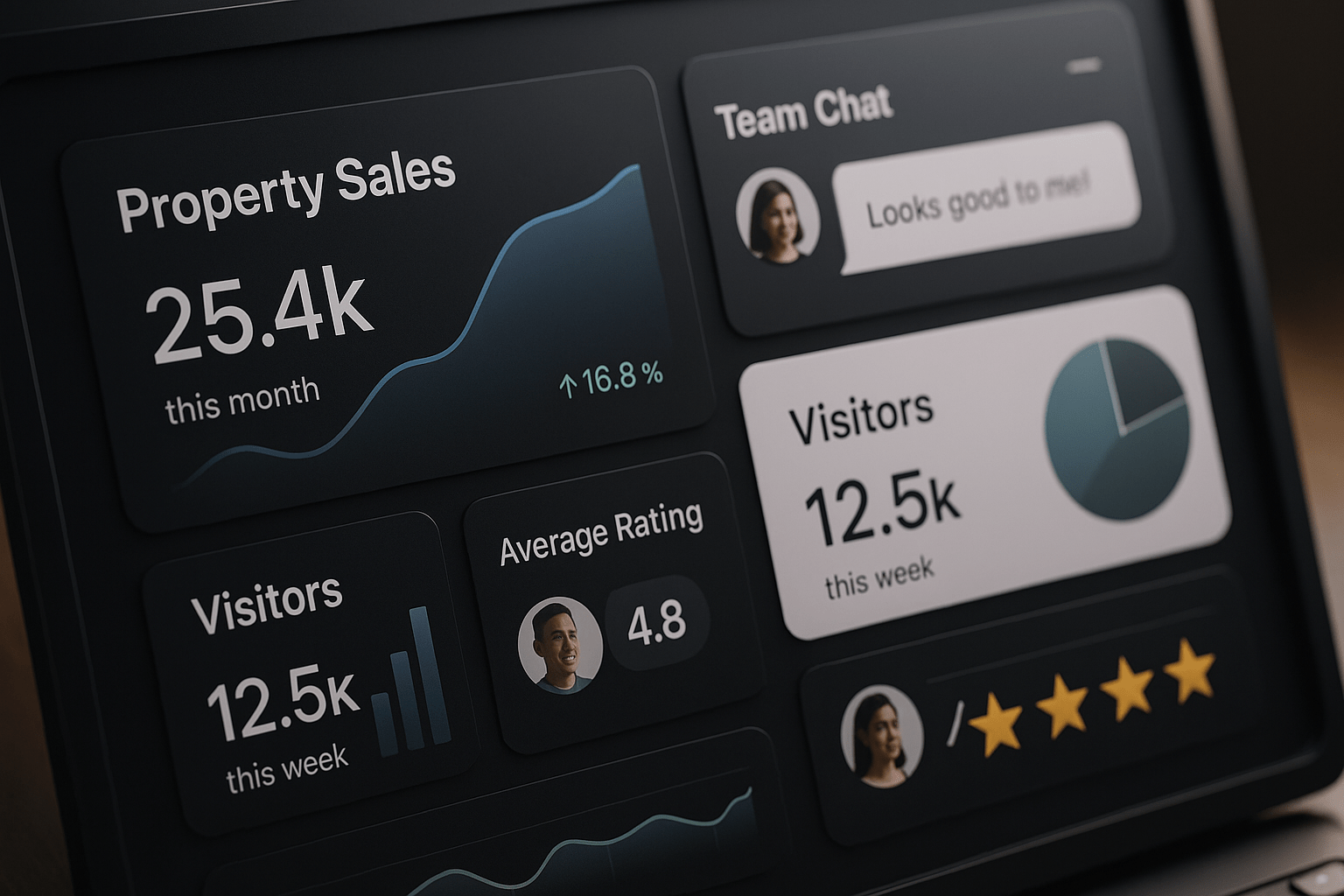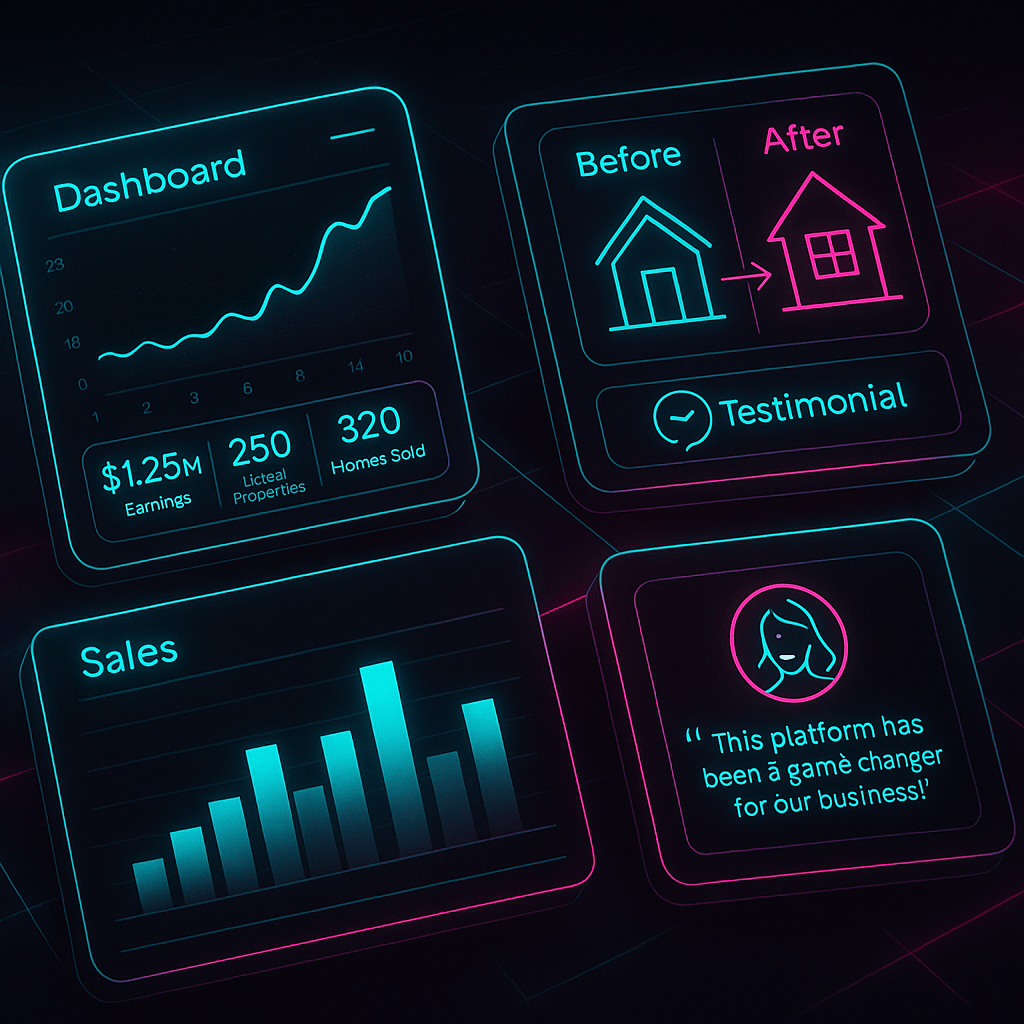Real Estate Agencies Success with Graphic Design
by Design Delulu Editorial · September 21, 2025

In today's competitive real estate market, standing out from the crowd isn't just about having the best properties—it's about how you present them. Real estate agencies are discovering that professional graphic design isn't a luxury; it's a necessity for success. From property listings that capture attention to brand materials that build trust, graphic design has become the secret weapon for agencies looking to dominate their local markets.
The real estate industry is uniquely visual. Potential buyers make split-second decisions based on first impressions, whether they're scrolling through online listings or walking past a for-sale sign. This reality makes graphic design not just beneficial, but absolutely critical for real estate agencies that want to thrive in an increasingly digital marketplace.

Why Real Estate Agencies Need Graphic Design
Key Challenges Real Estate Agencies Face
Real estate agencies operate in one of the most competitive industries, where visual presentation can make or break a sale. The primary challenges include:
- Generic Marketing Materials: Most real estate agencies rely on templated flyers, basic property photos, and cookie-cutter branding that fails to differentiate them from competitors. This generic approach leads to reduced memorability and lower conversion rates.
- Poor Online Presence: With 97% of home buyers starting their search online, agencies with subpar website design, low-quality listing photos, and inconsistent branding miss out on potential clients before they even make contact.
- Trust and Credibility Issues: Real estate is a high-stakes transaction where trust is paramount. Agencies with unprofessional visual materials struggle to establish credibility with potential clients who are making potentially the largest purchase of their lives.
- Ineffective Property Marketing: Properties that don't photograph well or lack professional staging and presentation materials sit on the market longer, costing both the agency and their clients valuable time and money.
How Graphic Design Solves These Problems
Professional graphic design addresses these challenges head-on by creating a cohesive, professional brand experience that builds trust and drives results. Quality design transforms how potential clients perceive an agency's professionalism and expertise.
- Brand Differentiation: Custom logos, color schemes, and design elements help agencies establish a unique market presence that clients remember and refer to others.
- Enhanced Property Presentation: Professional photography, floor plans, virtual tours, and property brochures showcase homes in their best light, leading to faster sales and higher prices.
- Digital Marketing Optimization: Well-designed websites, social media graphics, and email templates improve engagement rates and conversion metrics across all digital channels.
- Trust Building: Consistent, professional design across all touchpoints—from business cards to yard signs—establishes credibility and positions the agency as a market leader.

Essential Features of Graphic Design for Real Estate Agencies
Must-Have Design Elements and Workflows
- Professional Photography and Editing: High-quality property photos with proper lighting, composition, and post-processing are non-negotiable. This includes exterior shots, interior staging, and detail photography that highlights key selling points.
- Custom Branding Package: A comprehensive brand identity including logo variations, color palettes, typography guidelines, and brand standards ensures consistent presentation across all materials.
- Property Marketing Materials: Professional flyers, brochures, postcards, and digital presentations that can be quickly customized for each listing while maintaining brand consistency.
- Digital Presence Assets: Responsive website design, social media templates, email signatures, and online advertising graphics that work seamlessly across all digital platforms.
- Print Collateral: Business cards, yard signs, vehicle wraps, and office signage that reinforce the agency's professional image in physical interactions.
Real-World Applications
Successful real estate agencies implement design systems that streamline their marketing processes. For example, a template-based approach allows agents to quickly create professional listing materials by simply updating property details and photos while maintaining brand consistency.
Virtual staging has become particularly valuable, allowing agencies to show properties' potential without the cost and logistics of physical staging. Interactive floor plans and 3D virtual tours give potential buyers a comprehensive understanding of properties before scheduling showings.
Social media templates enable consistent posting schedules with professional-looking content that showcases listings, shares market insights, and builds the agency's reputation as a local expert.

Common Mistakes to Avoid
Typical Pitfalls in Graphic Design for Real Estate Agencies
- Inconsistent Branding: Using different fonts, colors, and styles across various materials confuses potential clients and diminishes professional credibility. Consistency is key to building brand recognition and trust.
- Poor Quality Photography: Dark, blurry, or poorly composed photos are the fastest way to lose potential buyers. Even the most beautiful property can appear unappealing with bad photography.
- Overcrowded Designs: Cramming too much information into flyers, websites, or advertisements creates visual clutter that overwhelms viewers and reduces the impact of key messages.
- Generic Stock Photos: Using obvious stock photography instead of authentic, local imagery makes agencies appear impersonal and disconnected from their community.
- Ignoring Mobile Optimization: With most property searches happening on mobile devices, designs that don't work well on smartphones and tablets miss a significant portion of the target audience.
How to Do Better
Focus on clean, professional designs that highlight properties and build trust. Invest in quality photography and maintain strict brand guidelines across all materials. Regularly audit your visual materials to ensure they meet current design standards and effectively represent your agency's expertise.
Work with experienced designers who understand the real estate industry's unique requirements. They can create systems that are both professional and practical for busy agents to use consistently.
Test your materials with actual clients to ensure they're effective. What looks good to you might not resonate with your target audience, so gather feedback and refine your approach based on real-world results.
SEO / Growth Best Practices
Optimization Tips Specific to Real Estate Agencies
- Local SEO Integration: Design elements should incorporate local landmarks, neighborhood names, and community features that help with local search optimization. This includes using location-based keywords in image alt texts and captions.
- Visual Content Strategy: High-quality images and graphics improve website engagement metrics, which positively impacts search rankings. Property photos, neighborhood guides, and market reports with professional design elements encourage longer site visits and social sharing.
- Mobile-First Design: With Google's mobile-first indexing, responsive design isn't optional. Ensure all graphic elements load quickly and display properly on mobile devices to maintain good search rankings.
- Content Marketing Support: Design templates for blog posts, market reports, and educational content help agencies maintain consistent publishing schedules, which improves SEO performance and establishes thought leadership.
Leveraging Graphic Design for Visibility and Results
Strategic graphic design amplifies marketing efforts across all channels. Social media graphics increase engagement rates, which improves organic reach on platforms like Facebook and Instagram where many potential clients discover properties.
Professional email templates improve open and click-through rates, leading to more qualified leads and higher conversion rates. Well-designed landing pages for specific properties or neighborhoods can significantly improve pay-per-click advertising performance.
Brand consistency across all touchpoints builds recognition and trust, leading to more referrals—the lifeblood of successful real estate businesses. When clients have a consistently positive experience with an agency's professional presentation, they're more likely to recommend the agency to friends and family.
Conclusion
Graphic design has evolved from a nice-to-have to a must-have for real estate agencies serious about growth and success. In an industry where first impressions and trust are everything, professional design creates the foundation for building lasting client relationships and achieving consistent sales results.
The investment in quality graphic design pays dividends through improved lead generation, faster property sales, higher prices, and increased referral business. Agencies that embrace professional design position themselves as market leaders and create sustainable competitive advantages in their local markets.
Ready to improve your real estate agency with graphic design? Professional design services can transform your agency's market presence and drive measurable results.
👉 Explore Graphic Design at Design Delulu
Additional Resources:
Transform your real estate agency's visual presence and start seeing the results that professional design can deliver.